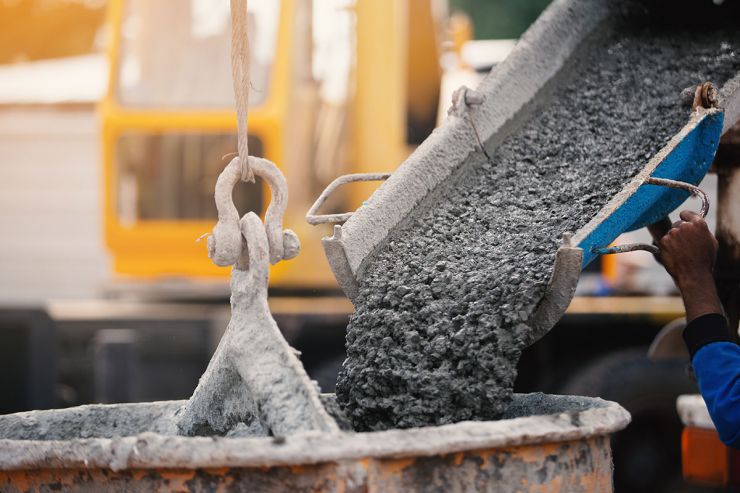How Does Concrete Adapt To Cold Weather?

The Effects Of Cold Weather While Pouring Concrete
Cold temperatures such as frost can be less than ideal to pour concrete, as the freezing temperatures can mess with the mixture and damage the concrete before it has a chance to set. If temperatures drop while the concrete hasn’t set or gained enough strength, the water inside the mixture will freeze and expand, causing the overall volume to increase. Then when the temperatures rise again, the concrete mixture thaws out and the concrete is left with empty pores from where the water expanded. These empty pores can lead to cracks and diminish the concrete construction’s overall strength. To avoid this, the mixture is usually altered to combat the freezing. Usually, Portland cement is used for colder climates, as it sets faster and so gives less time for the cold weather to do any real damage. Mixtures for cold climates will also up the cement content in their mix and incorporate an accelerator for faster setting and less water content.
The Effects Of Cold Weather On Setting Concrete
In its early life, concrete can be more easily affected by cold temperatures. This is because the concrete isn’t completely set and over time it will strengthen more and more and become more durable. Concrete construction that will be subjected to low temperatures and frost should be protected from heat loss while it’s setting to avoid any disruptions to the final result. If concrete that is still setting is allowed to freeze, then the concrete mixture will become disturbed due to the expansion of the frozen water within the mixture. Freshly placed concrete that has frozen over should be removed and replaced, as the mix will be ineffective. Like with concrete that is yet to be poured, it is made up of part water. If the mixture is not set before the cold comes in, the water within the mixture will freeze and damage the final set concrete. For every 10°F drop in temperature, the time it takes the concrete to set will increase roughly 45 minutes, and so leaving concrete to set in cold conditions will also take much longer.
The Effects Of Cold Weather On Set Concrete
Cold weather doesn’t really affect set or mature concrete and some concrete mixtures are actually developed with cold weather in mind. Cold mix concrete will usually be made up of Portland cement and aggregates like sandstone, both of which strengthen the mixture and prevent cracking due to temperature changes. However, if the mixture wasn’t properly prepared with temperature changes in mind, cold weather could potentially damage the set concrete construction. This would only happen if the concrete is subject to cycles of freezing temperatures and thawing. Mature concrete will usually develop issues due to cold within its first freezing exposure, and so if your set concrete has withstood freeze/thaw temperatures already, it should be sturdy and long-wearing.



